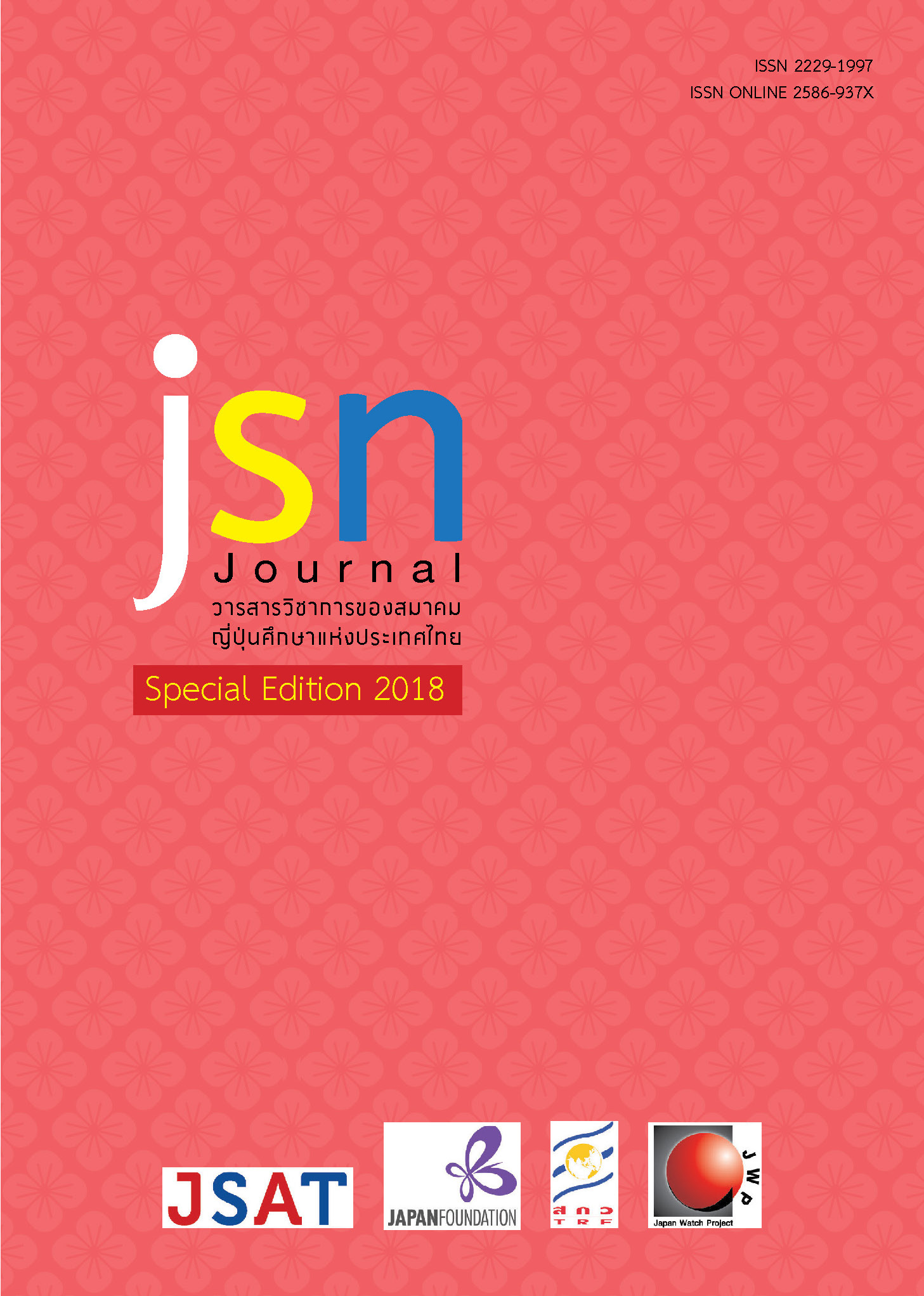Functions of Repetition as the Speaker’s Emotional Expression in Japanese Conversation : Based on the Japanese Television Drama Scenario
Main Article Content
Abstract
Article Details
ข้อความและข้อคิดเห็นต่างๆ ในบทความเป็นของผู้เขียนบทความนั้นๆ ไม่ใช่ความเห็นของกองบรรณาธิการหรือของวารสาร jsn Journal
References
Deborah Tannen (2007). Talking Voices. Cambridge University Press (Second Edition).
Eun-Ju, NOH (1995). A Pragmatic Approach to Echo Questions. UCL Working Papers in Linguistics 7, 107-140.
Wilson, D. & D. Sperber. (1992). On Verbal Irony. Lingua, 87, 53-76.
梅木俊輔 (2011).「エコー型聞き返しの発話機能と発話末イントネーションとの関係」『日 本語/日本語教育研究』(2), pp.119-136.
田中妙子 (1997).「会話における<くりかえし>-テレビ番組を資料として-」『早稲田大 学日本語研究教育センター紀要』9号, pp.47-67, 早稲田大学.
中田智子 (1992).「会話の方策としてのくり返し」『国立国語研究所報告 104研究報告集 13』, pp.267-302.
堀口純子 (1997).『日本語教育と会話分析』くろしお出版.
牧野成一 (1980).『くりかえしの文法-日・英語比較対照』大修館書店.
南不二男 (1985).「質問文の構造」『朝倉日本語新講座4文法と意味II』朝倉書店.
スリーエーネットワーク(2013).『みんなの日本語 初級II 第2版』スリーエーネットワーク.


